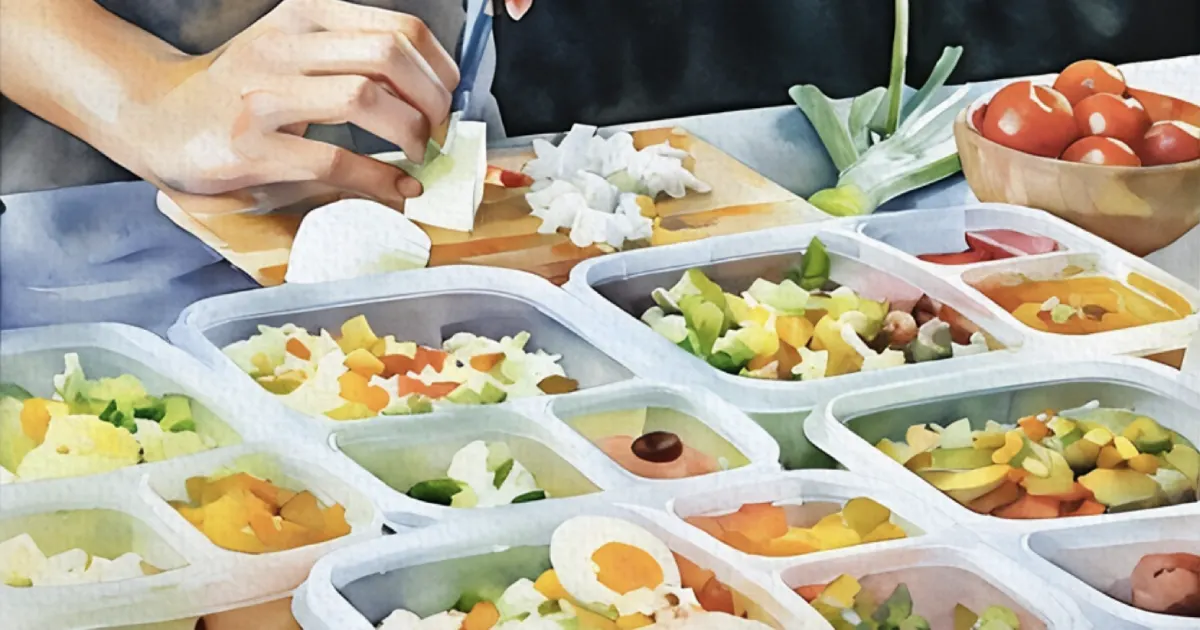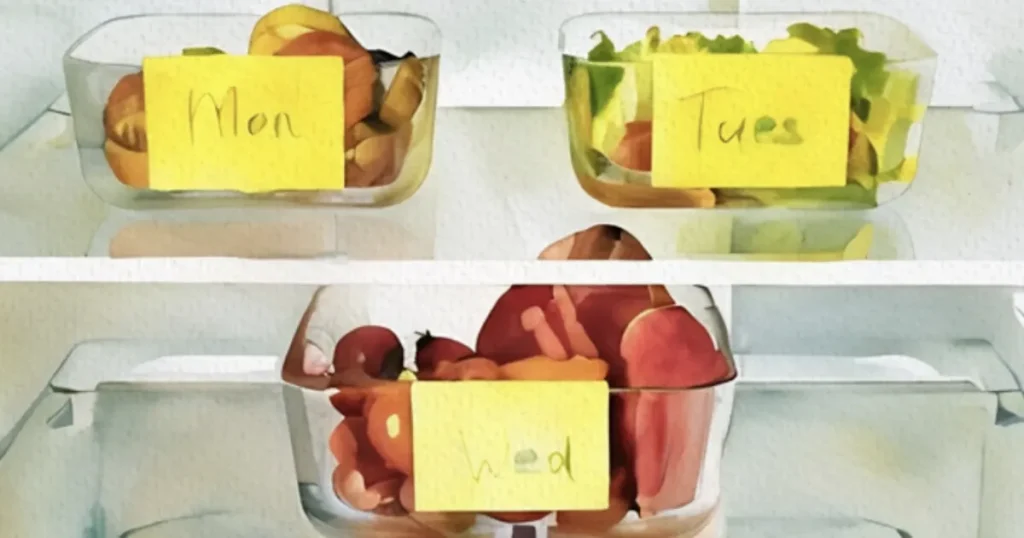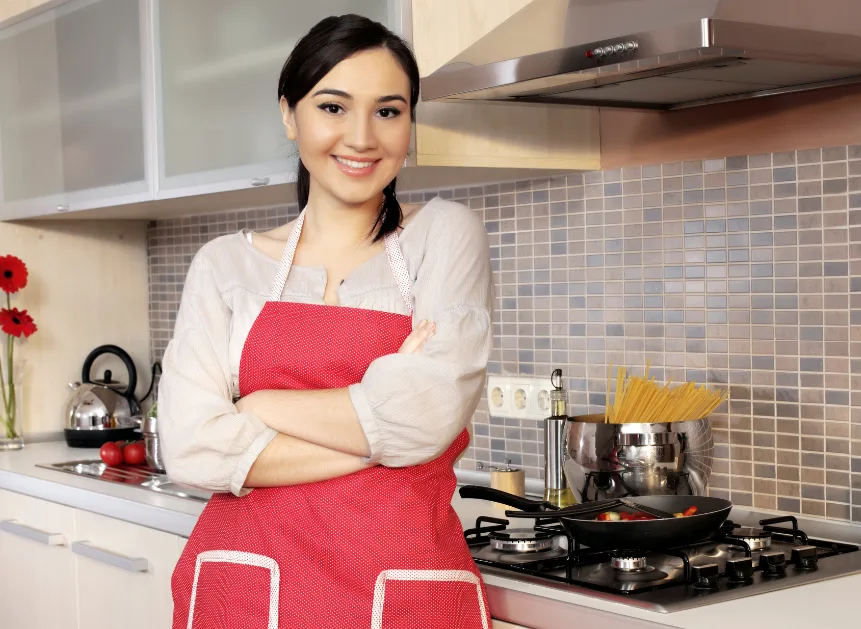Cooking every day can feel like a chore, but what if you could spend just a few hours in the kitchen and have delicious, home-cooked meals ready for the entire week? That’s the magic of batch cooking.
It’s not about making endless portions of the same dish—it’s about cooking strategically, so you save time, reduce waste, and still enjoy variety in your meals. Whether you’re a busy professional, a parent juggling a packed schedule, or just someone who wants to simplify mealtime without sacrificing flavor, this guide will walk you through everything you need to know.
From planning and prepping to storage tips and meal ideas, you’ll learn how to master batch cooking and make your kitchen work smarter, not harder.
What is Batch Cooking?
In simple terms, batch cooking is preparing meals or meal components in bulk to be eaten later. Instead of starting from scratch every night, you spend a few hours in the kitchen once or twice a week to create a stash of meals or ingredients that are ready to go when you are.
For example, you might cook up a big pot of chili, roast a tray of vegetables, or make several portions of rice and freeze them to eat all throughout the week, either as is or as part of different dishes. For freshness and variety, many people who batch cook prepare different ingredients in large batches and keep them separate until they’re ready to assemble their meals.
So it’s not like you’re cooking a big batch of spaghetti and have to have spaghetti every night for dinner until Sunday. The beauty of this technique is that once the components are ready, you can mix and match them in various combinations, so you never feel like you’re eating the same meal over and over. When hunger strikes, all you have to do is assemble, reheat, and enjoy. Think of batch cooking like meal prep’s cooler, more flexible cousin.
What’s the Difference between Batch Cooking and Meal Prep?
You might be wondering: isn’t batch cooking just meal prep? Not exactly.
While both involve planning and preparation to make mealtimes easier, their methods and outcomes are different. Meal prep typically focuses on pre-portioning entire meals into containers, often one for each day of the week. For example, you might prepare five identical chicken, rice, and vegetable bowls, ready to grab each morning or evening. It’s a great system if you thrive on structure and don’t mind repeating meals.
Batch cooking, on the other hand, is all about preparing large quantities of food – whether they’re full meals or individual components like grains, proteins, or sauces – and storing them in ways that give you flexibility. Instead of pre-assembled meals, batch cooking leaves room for variety. That big pot of rice? It could pair with stir-fried vegetables and tofu one day, and with chili the next. Or that roasted chicken might show up in tacos tonight and a hearty salad tomorrow.
Even better, the two approaches can complement each other beautifully. You can batch-cook versatile components and then portion them into grab-and-go containers for meal prep. For instance, roasted veggies, quinoa, and grilled salmon can be mixed and matched into several different meals with just a little advance planning.
By combining the best of both worlds, you get the convenience of meal prep with the flexibility of batch cooking.
Types of Batch Cooking
1. Full Meals
Batch cooking full meals is the ultimate time-saver for busy households. These are complete dishes that only need reheating – perfect for when you’re too tired or have no time to cook but still want to serve your family a warm, homemade dinner.
Think of hearty options like soups, stews, casseroles, or curries, which are ideal for batch cooking because they store and reheat exceptionally well without losing flavor or texture.
2. Meal Components
However, batch cooking isn’t just about entire dishes – it can also focus on key components of a meal, giving you the flexibility to mix and match during the week. For instance, you could grill chicken breasts, roast vegetables, cook a big batch of quinoa, and whip up a jar of your favorite sauce.
Throughout the week, these ingredients can be combined in countless ways: chicken and veggies over rice one night, quinoa bowls with roasted veggies and tahini dressing on another.
Meal components also cater to varied tastes within a household, allowing each person to assemble their plates differently. Preparing versatile ingredients in advance eliminates the need for daily cooking without locking yourself into a set menu.
3. Snacks and Sides
Batch cooking isn’t limited to full meals or main components, either – it’s a lifesaver when it comes to snacks and sides, too. Preparing snacks like muffins, granola bars, or energy balls ahead of time ensures you always have something healthy to grab when hunger strikes.
Similarly, making dips like hummus or guacamole in bulk means your fridge is stocked with go-to options for snacking or entertaining. Sides are another game-changer: a large batch of mashed potatoes can complement several main dishes, while a fresh coleslaw or roasted sweet potatoes can round out any meal. Batch-prepping these smaller items adds variety and convenience to your week, ensuring that even the “extras” feel effortless.
The Benefits of Batch Cooking
Save Time: Cook Once, Eat All Week
Say goodbye to the nightly scramble to figure out what’s for dinner. Batch cooking lets you consolidate your kitchen time into one focused session, freeing up your evenings for relaxation, family time, or just binge-watching your favorite show.
By prepping in advance, you save hours of time throughout the week – time better spent outside the kitchen.
Cut Costs with Bulk Buying
Batch cooking is a wallet’s best friend. Stocking up on ingredients in bulk not only lowers costs but also minimizes those tempting midweek grocery runs where “just one thing” turns into a cart full of impulse buys. Plus, fewer nights of takeout mean more money in your pocket for the things you actually want.
According to Pyrex, batch cooking can save you money on your annual food budget – an average of £1,100 to be exact, with some even saving up to £1,540 a year.
Reduce Food Waste
No more limp lettuce or sad carrots lurking in the back of the fridge. Batch cooking ensures you use ingredients while they’re fresh, turning potential food waste into delicious dishes. It’s not just a win for your budget – it’s a win for the planet, too.
Healthier, Homemade Meals
When you batch cook, you’re the boss of what goes into your food. Say goodbye to overly salty, preservative-filled takeout and hello to wholesome, nutrient-packed meals that actually taste good. Whether you’re watching your sugar, upping your intake of veggies, or experimenting with new flavors, batch cooking puts you in control of your health.
Stress-Free Mealtime
Imagine opening your freezer or fridge and seeing ready-to-eat meals waiting for you. Batch cooking takes the mental load out of mealtime, making dinner as simple as heat, eat, and enjoy.
With one less thing to stress about, you can focus on more important things at home.
How to Get Started with Batch Cooking
Essential Tools and Equipment
- Large pots and pans: For making big batches of soups, stews, or grains.
- Baking trays: Great for roasting veggies or baking multiple portions of protein.
- Storage containers: Invest in airtight, freezer-safe containers or reusable bags.
- Labels and markers: Trust me, you won’t remember what’s in that random container two weeks from now.
Planning
- Plan meals you actually want to eat: What meals or components do you actually want to eat this week? Think about it – there’s no point in batch-cooking five pounds of broccoli if everyone in your house secretly hates it. Pick a mix of family favorites and new freezer-friendly recipes, and you’re already halfway to batch-cooking glory. Consider using ingredients you already have in your kitchen and pantry so they don’t go to waste.
- Choose freezer-friendly recipes: Not every dish can handle life in the freezer – sorry, leafy salads. Focus on freezer-friendly batch cooking recipes that hold up well under reheating pressure like hearty soups, casseroles, or stir-fry bases.
- Pick crowd-pleasing dishes: Let’s face it: batch cooking is a waste if no one eats what you make. Choose meals that align with your household’s preferences to avoid the dreaded “not this again” face at the dinner table. If everyone loves it, you’ll be a hero; if not, well… there’s always delivery.
Shopping
- Write it down: Before you hit the store, make a detailed list of everything you’ll need so you’re not wandering the aisles like a lost soul or forgetting the one ingredient you actually needed. Stick to your list to avoid going over budget.
- Bulk like a boss: Why buy one bag of rice when you can buy a sack big enough to double as a workout weight? Staples like grains, beans, and proteins are usually cheaper in bulk, so channel your inner warehouse shopper and stock up.
- Shop what’s fresh: Seasonal produce isn’t just fresher and tastier – it’s also friendlier to your wallet. Skip the off-season strawberries and embrace what’s ripe and ready. Bonus points if you feel fancy saying things like “I only cook with seasonal ingredients.”
Best Practices for Batch Cooking
Create a Cooking Day Strategy
- Set aside time: Set aside a solid block of time – think of it as a culinary marathon, not a sprint. Start by organizing your kitchen workspace before you begin; clear counters, gather all your ingredients, and line up your tools so you’re ready to roll. Use your kitchen like a well-oiled machine, with soup bubbling on the stove, veggies roasting in the oven, and your slow cooker churning out something delicious in the corner.
- Multitasking is key: Prep your ingredients in batches, like chopping all your vegetables or browning proteins at once, to streamline the process. Don’t forget to clean as you go to keep the chaos manageable – no one wants to face a mountain of dirty dishes after hours of cooking. Plan an order of operations, starting with dishes that take the longest or require cooling before storage, so everything flows smoothly.
- Pace yourself: Burnt-out cooks are no fun – cook but schedule breaks in between if you’re tackling a lot of recipes. Set the mood with upbeat music or a favorite podcast to keep your energy up, and keep snacks or a refreshing drink on hand – you can’t batch cook on an empty stomach!
Portioning and Storage
Before you store anything, decide if single servings or family-sized portions make more sense for your household.
Single servings are great for on-the-go lunches, while family portions are lifesavers for weeknight dinners. Use airtight containers, freezer bags, or vacuum sealers to lock in freshness – because no one likes freezer burn as a side dish.
Bonus tip: stack containers neatly for Tetris-like satisfaction and optimal freezer space.
Labeling and Organising
Avoid the “what is this?” freezer mystery. Save yourself from future frustration by labeling everything clearly with the meal name and date.
A simple “Spaghetti Sauce 11/24” can help you remember when you cooked it, reducing the risk of eating batch cooked food that’s gone bad. Arrange your freezer like a pro, with older meals front and center, so nothing gets buried and forgotten.
Freezing and Reheating
Cool your dishes completely before freezing. This prevents ice crystals and soggy textures when reheated. Divide meals into portion sizes that suit your needs; reheating just what you need avoids waste and keeps leftovers fresh longer.
For soups and stews, the stovetop is your best friend, offering even heating and that freshly-cooked feel. The microwave is great for speed but stir often to avoid those annoying cold spots that ruin a good meal.
Shelf-Life Guidelines
Batch-cooked meals have a surprisingly long life when stored correctly: most cooked dishes last 3 to 4 days in the fridge and up to 3 months in the freezer. If you’re not too sure, trust your senses – or, when in doubt, toss it out.
Here is a general guideline for the shelf life of common batch cooking recipes:
| Refrigerator | Freezer | Examples | |
| Soups and stews | 3-4 days | Up to 3 months | Chicken noodle soup, lentil stew, or beef chili |
| Casseroles | 4-5 days | Up to 3 months | Lasagna, shepherd’s pie, or enchilada casserole |
| Cooked grains | 4-5 days | 1-2 months | Rice, quinoa, farro, or barley |
| Roasted vegetables | 4-5 days | 2 months (if blanched) | Sweet potatoes, broccoli, carrots, or brussels sprouts |
| Dips and sauces | 7-10 days | 3-4 months | Tomato sauce, pesto, hummus, or guacamole (freeze without added dairy) |
| Cooked proteins | 3-4 days | Up to 3 months | Grilled chicken, baked fish, pulled pork, or ground turkey |
| Curries | 3-4 days | Up to 3 months | Chicken tikka masala, vegetable curry, or Thai green curry |
| Baked goods | 5-7 days | 2-3 months | Muffins, banana bread, or breakfast scones |
| Energy balls or snack bars | 1-2 weeks | Up to 3 months | Oatmeal protein balls, granola bars, or nut-based snacks |
| Mashed potatoes or rice-based dishes | 3-4 days | Up to 2 months | Mashed potatoes, risotto, or rice pilaf |
Types of Food That Don’t Work For Batch Cooking
Some food and ingredients are not meant for batch cooking because they don’t freeze well. Here’s a list and and why they’re not invited to the freezer party:
- Lettuce and other leafy greens: Why? They’ll go soggy and sad faster than your willpower at a buffet. Freezing them makes them lose all their crunch, and nobody wants limp lettuce on their plate.
- Raw potatoes: Unless you’re prepping mashed potatoes, raw potatoes turn into mushy, discolored blobs once frozen. It’s like they age in reverse: they go from “fresh” to “sad potato” in one freezer cycle.
- Cucumber: Freezing cucumbers turns them watery and squishy. Unless you’re fine with that, I suggest
- Egg-based sauces and mayonnaise: The ingredients in these sauces will separate or curdle when defrosted. Yikes.
- High-moisture fruits: High-moisture fruits like watermelon, strawberries, and tomatoes turn into mush when thawed, basically becoming the fruit equivalent of a soggy sponge. Let’s be real: no one wants that squishy strawberry experience.
Using Technology
Meal planning and tracking just got easier, thanks to apps you can easily download. They help you plan recipes, organize shopping lists, and keep tabs on what’s hiding in your freezer. Because nothing’s worse than making a shopping list only to realise you already had three bags of frozen peas.
Check out these meal planning apps:
Common Batch Cooking Challenges (and How to Resolve Them)
Feeling Overwhelmed
“Help, I’m Drowning in Tupperware!”
Batch cooking can seem intimidating when you’re staring at a mountain of ingredients and no idea where to start. Break it down: start small, like doubling one recipe instead of tackling ten. Remember, Rome wasn’t built in a day – and neither is a freezer full of meals.
Boredom from Repetition
“Chicken Again?!”
Eating the same dish over and over can make even your favorite recipes feel like a chore. Mix it up by batch cooking meal components that can be repurposed – roast chicken becomes tacos, stir-fry, or soup. Your taste buds will thank you for the variety, and your freezer won’t feel like a broken record.
Limited Storage Space
“Where Am I Supposed to Fit This?”
If your freezer is already jam-packed with ice cream and mystery leftovers, storage can be a real challenge. Invest in stackable containers or freezer bags that lay flat to maximize space. If all else fails, it might be time for a good old-fashioned freezer clean-out (and maybe a popsicle party).
Food Safety Concerns
“Is This Still Safe to Eat?”
Knowing how to store and reheat food safely is key to avoiding any unwanted “surprises.” Let meals cool completely before freezing, label everything clearly, and stick to recommended shelf lives.
Post-Cooking Cleanup
“Why Does My Kitchen Look Like a Tornado Hit It?”
Batch cooking can leave your kitchen looking like a war zone. Combat this by cleaning as you go – wash those pots and pans between recipes and wipe counters frequently. Or recruit a family member or friend to help; bribery with cookies works wonders!
Common Batch Cooking Mistakes (and How to Avoid Them)
Skipping the “Taste Test” Before Freezing
You don’t want to open your freezer a month later only to find that your soup tastes like cardboard. Always taste your dishes before freezing and tweak the seasoning as needed – freezing can dull flavors, and bland meals are nobody’s idea of a good time. A little effort now saves you from adding half a spice rack later just to make dinner edible!
Choosing Complicated Recipes
Keep it simple, chef! Batch cooking isn’t the time to channel your inner gourmet genius with five sauces and a soufflé. Stick to easy recipes that freeze like a dream and won’t have you chopping for hours. Your future self will high-five you when dinner’s a breeze instead of a full-on kitchen adventure.
Skipping the Portion Control
Not portioning your meals properly can lead to one of two things: overeating (because you didn’t measure) or defrosting more than you need (hello, leftovers for days). Save yourself the hassle – prep single servings, and you’ll always have just the right amount (and maybe avoid that post-dinner food coma).
Not Cooling the Food Before Storing
Hot food + freezer = disaster. Not letting your food cool before freezing is like sending it into an icy time-out it wasn’t ready for. Tossing hot dishes into containers creates condensation, which turns into ice crystals and ruins your food faster than you can say “freezer burn.” Give your chili, soup, or casserole a chance to chill out first – you don’t want to fight through a layer of freezer scorn just to enjoy dinner.
Taking on Too Much at a Time
This is a recipe for culinary chaos – it’s like trying to fit an entire buffet into one frying pan. Embrace the power of multitasking by putting your oven, stove, and slow cooker to good use. But remember, multitasking without a plan is just fancy wordplay for “mess waiting to happen,” so keep it organized and save yourself from the one-pot apocalypse!
Batch Cooking Ideas For Beginners
Ready to stock your fridge and freezer without feeling overwhelmed? Whether it’s breakfast, lunch, dinner, snacks, or dessert, we’ve got you covered. No culinary degree required – just a little enthusiasm and freezer space!
Breakfast
- Make-ahead breakfast burritos: Scrambled eggs, veggies, and cheese wrapped in tortillas. Freeze individually and reheat for a quick, satisfying breakfast.
- Baked oatmeal squares: A heartier take on oatmeal that can be sliced, stored, and grabbed on the go.
- Mini frittatas: Egg muffins packed with veggies and protein. Great for meal prep and easy to freeze.
- Pancakes or waffles: Make a big batch and freeze them. Just pop in the toaster or oven when needed.
- Smoothie freezer packs: Pre-portion fruits, greens, and add-ins into bags. Blend with your choice of liquid for a fast, nutritious breakfast.
Lunch:
- Freezer-friendly soups and stews: Think lentil soup, minestrone, or chicken noodle. Freeze in portions for easy reheating.
- Batch-cooked grains and proteins: Cook a big batch of quinoa, rice, or roasted chickpeas to mix and match throughout the week.
- Make-ahead grain bowls: Prepped grains, roasted veggies, and proteins like grilled chicken or tofu. Store separately and assemble fresh.
- Slow cooker pulled chicken or pork: Perfect for tacos, sandwiches, or rice bowls. Freeze in portions for quick meals.
- Hearty chili: Make a big pot, portion it out, and freeze. It’s a high-protein, no-fuss meal.
Dinner
- Casseroles and bakes: Lasagna, baked ziti, or enchiladas. Freeze in portions for effortless dinners.
- Sheet pan dinners: Roast proteins and veggies together for an easy, flavorful meal with minimal cleanup.
- One-pot curries and stir-fries: Chicken tikka masala, coconut vegetable curry, or teriyaki tofu—big flavor, minimal effort.
- Meatballs or veggie balls: Make a batch, freeze, and pair with pasta, rice, or subs.
- Homemade pizza kits: Pre-bake crusts, store with sauce and toppings, and assemble fresh for an easy pizza night.
- Slow cooker stews: Toss in your ingredients, let it simmer, and freeze leftovers for a comforting, no-stress meal.
Fun fact: In 2020, two-thirds of UK residents were batch cooking their dinners, with popular dishes including curry, stew, and spaghetti Bolognese.
Desserts
- Cookie Dough Logs: Roll cookie dough into logs, freeze, and slice off rounds to bake fresh when needed.
- Slab Brownies or Blondies: Bake in large trays, cut into portions, and freeze. Defrost as needed.
- Make-Ahead Fruit Crumbles: Prep large trays of fruit crumble, bake, and freeze in portions. Reheat in the oven for a just-made taste.
Snacks: Anytime Pick-Me-Ups
- Granola Clusters: Bake a large tray of homemade granola, break it into clusters, and store in airtight containers.
- Protein-Packed Trail Mix: Mix up a big batch of nuts, seeds, and dried fruit, then portion into smaller snack bags.
- Roasted Nut Mix: Roast almonds, cashews, or peanuts in bulk with spices, then store in jars for a long-lasting, crunchy snack.
- Savoury Roasted Chickpeas: Roast chickpeas with spices in large quantities and store in airtight containers for a crunchy, protein-rich snack.
- Frozen Energy Bars: Blend oats, nut butter, and dates, press into a tray, cut into bars, and freeze.
Love these recipes but short on time? We get it—sometimes, life gets too busy for all the chopping, stirring, and cleanup. Fortunately, with Cheffo, you can find someone to do your batch cooking for you, so you can enjoy homemade meals without any of the hassle.
Frequently Asked Questions About Batch Cooking
What is batch cooking?
Batch cooking means preparing large portions of a meal or components ahead of time, which you can freeze or store for later use. Think of it like cooking in bulk for the lazy days ahead.
How long can I store batch-cooked meals?
Most dishes last 3 to 4 days in the fridge and up to 3 months in the freezer. Just make sure to freeze them in portions to avoid defrosting more than you need.
How do I reheat batch-cooked meals?
Soups and stews are best reheated on the stove for a slow, even warm-up. The microwave works for quick reheats, but be sure to stir regularly to avoid cold spots
What if I don’t have enough freezer space?
If space is tight, try freezing sauces and soups first since they’re compact. You can also look into stacking containers and labeling them to maximize every inch.
How can I avoid meal boredom with batch cooking?
Rotate your main ingredients, like making a big batch of black beans and using them for tacos, burritos, or salads. This way, the same base meal turns into multiple new dishes.
How can batch cooking save me money?
By buying ingredients in bulk, you cut down on multiple trips to the store and lower your grocery bill. Plus, batch cooking reduces the temptation to splurge on fast food and takeout.
Does batch cooking save energy?
Batch cooking can significantly cut down on energy usage compared to cooking fresh meals every night, potentially saving the average household around £100 a year.
Can batch cooking be flexible if my tastes change?
Absolutely! Batch cooking isn’t about rigid meals. You can cook components like grains, roasted veggies, or grilled meats, which you can mix and match throughout the week for variety.
Conclusion
Batch cooking isn’t just about saving time – it’s a lifestyle upgrade. The beauty of batch cooking is its flexibility, whether you’re a beginner who just wants to prep a few basics or a seasoned pro stocking your freezer like there’s no tomorrow, there’s no wrong way to do it.
Start small: double a recipe or prepare an extra batch of your favorite soup. Experiment with different meals and cooking strategies to find what works best for your taste buds, schedule, and storage capacity. And remember, it doesn’t have to be perfect – there’s always room for improvement as you go.
In the end, batch cooking is like a gift you give your future self. When you embrace it, you’re not just saving time; you’re reclaiming your evenings, your health, and your peace of mind.







Leave a comment